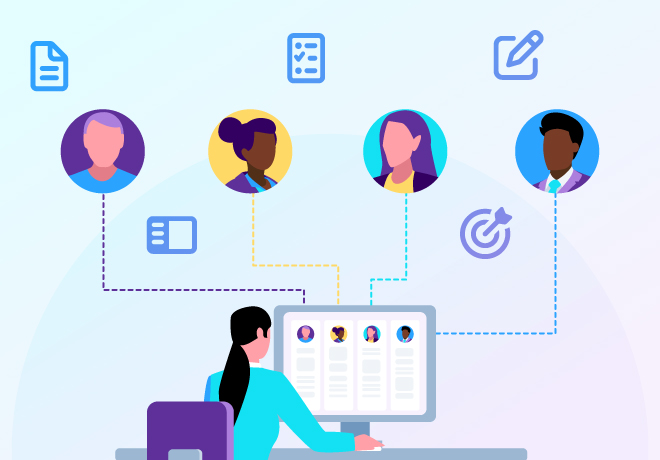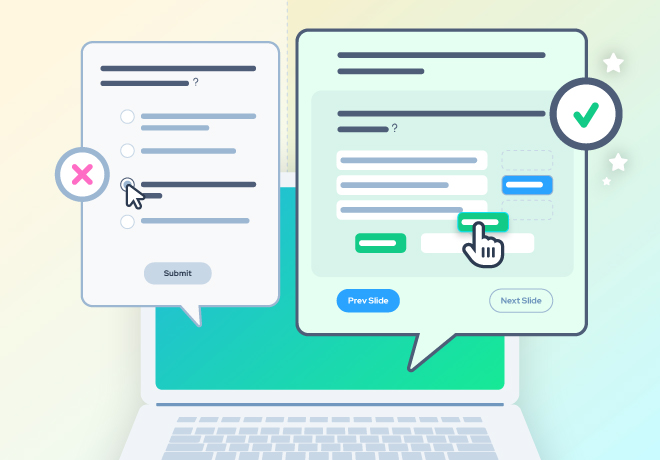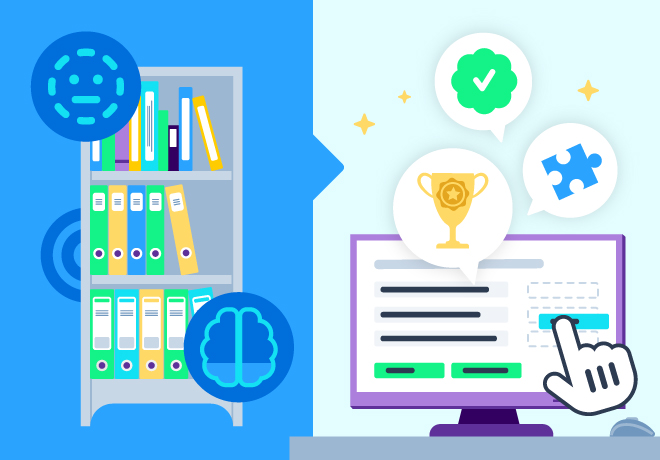
5 ways you can develop effective training for adult learners

Related articles
Get valuable eLearning insights to your inbox.
Listen to Neovation’s Demystifying eLearning podcast generated with NotebookLM!
Listen to our podcast on your favorite platform!
All learners avoid training that they perceive as redundant or irrelevant. They, like you, prefer to focus on what they perceive to be their actual work!
So, when creating training for adult learners, it’s especially challenging to create effective training that ticks all the boxes — relevant, engaging, fits into their busy workday, fits their learning environment, is available on demand on their favorite device … that’s quite a list. Following these five tips will get you there, though.
1. Keep it relevant
Training that is repeated year in and year out, perhaps with minor changes is neither relevant nor engaging. Rather than repeat the same comprehensive “macrolearning” module, consider delivering it once to each learner — and then engaging the learner in a continuous learning strategy.
Extend learning, deepen retention, and cover all updates as they are needed with a microlearning solution to complement your initial training. Learners engage for a few minutes every day or a few times a week — year-round. The content they see is always relevant and always up to date.
2. Let your adult learners drive
Don’t force learners to consume content in a specific way or at specific times. Instead, offer options — on-demand content, non-linear content that allows them to choose which modules or sections to study.
Provide mobile-first, desktop-friendly formats that they can access on their favorite devices. Not all training content needs to be packaged in an eLearning “macro-sized” module. Consider providing short videos, text-based training, interactive infographics, gamified microlearning — choose the format based on the content, the learning goals, and the learners’ environment.
Regardless of format, give learners the freedom to move through the content in any sequence they choose. That means allowing them to sample the more complicated content first if they want — but be sure to provide a guided path they can fall back on if they need to review the foundational content.
Giving learners control over when, where, and how they do their training is the only way to boost engagement and ensure effective training for adults.
3. Offer scenarios for practice applying learning
Rote memorization of fact-dense content … is the antithesis of effective training. Teach learners what to do — then let them test their knowledge and skills. Scenario-based learning is a great way to do this and an essential element of effective training for adults.
Create realistic scenarios that learners have encountered or are likely to experience on the job — and let them explore a range of possible solutions or responses. Provide detailed feedback that lets them know why some options are preferable or some are simply unacceptable. Including frequent knowledge checks throughout macro- and microlearning modules lets learners check their understanding and keeps them engaged.
4. Let your adult learners know how they’re doing

Provide a progress meter, use levels and badges to mark progress, and build in formative feedback throughout training for adult learners. Learners of all ages like to see their achievements recognized!
They also want to know how much progress they’ve made and how much farther they have to go. This holds true even for non-linear content — badges and levels are a useful way to mark mastery of small units of content, so learners can see their improvement, even when they are not following a straight line from unit 1 to unit 10.
5. Recognize that not all content is equally important
Recognizing that learners need different levels of competency and expertise is essential when training adults. Depending on their job role, some learners might need only a general awareness of the content, along with knowledge of where to find deeper information — while learners in other roles might need to remember and use the content every day.
Provide mechanisms that allow learners to get to the level of competence they need, by creating different training units, allowing learners to choose which ones to study, and supplementing training courses with performance support tools and reference materials.
Improve the effectiveness of your training for adult learners!
Use these strategies to boost the impact of your training. You see engagement go up and training outcomes improve — boosting your bottom line.

Dan, the founder of Neovation Learning Solutions, is obsessed with improving digital learning and training. A frequent and engaging speaker at eLearning events, Dan is sure to make learners and L&D professionals alike question long-held beliefs and stretch their thinking about how people learn and retain information.
Become part of our L&D community
We publish a new learning hub article — full of useful, practical topics — weekly.
Not sure where where you want to start? Jump into one of our recently published articles and see where it takes you!








-svg.svg)
-svg.svg)
-svg.svg)
-svg.svg)